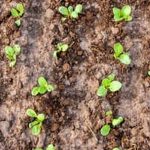Container vegetable gardening in Canada is a great way to enjoy fresh, homegrown produce even in limited outdoor spaces. With the right approach, this method of gardening can thrive in the Canadian climate and provide a bountiful harvest. From choosing the right containers to dealing with common challenges and pests, there are several factors to consider for successful container vegetable gardening in Canada.
The benefits of container vegetable gardening in the Canadian climate are numerous. For those living in urban areas or with limited yard space, container gardening provides an opportunity to grow a variety of vegetables without needing a traditional garden plot. It also allows for better control over soil quality and drainage, which can be particularly important in areas with harsh winters or varying climates.
When it comes to choosing the right containers for vegetable gardening in Canada, there are several options to consider. From traditional terracotta pots to fabric grow bags, each type of container has its own advantages and considerations when it comes to growing vegetables. Additionally, selecting the perfect vegetables for your container garden and learning essential tips for success are crucial steps towards a thriving harvest.
Benefits of Container Vegetable Gardening in the Canadian Climate
Container vegetable gardening in Canada offers numerous benefits, making it an ideal option for gardening enthusiasts, regardless of available space. One of the primary advantages of container gardening in Canada is the ability to extend the growing season. The harsh Canadian climate often limits traditional gardening, but containers can be easily moved indoors during colder months, allowing for year-round cultivation.
Additionally, container vegetable gardening in Canada provides flexibility and accessibility. Whether you live in an urban apartment or a rural home, containers can be placed on balconies, patios, or small yard spaces. This accessibility makes it easier for more Canadians to participate in gardening and enjoy the satisfaction of growing their own food.
Container vegetable gardening in Canada also allows for better control over soil quality and conditions. The use of high-quality potting mix tailored to specific vegetables’ needs helps ensure optimal growth and yield. Furthermore, containers prevent soil compaction and offer superior drainage compared to traditional garden beds.
Finally, container vegetable gardening in Canada can also be a practical solution for those concerned about water conservation. Containers require less water than conventional gardens because they have less surface area exposed to the elements and are more efficient at retaining moisture.
| Benefits | Description |
|---|---|
| Extended growing season | Containers can be easily moved indoors during colder months. |
| Flexibility and accessibility | Suitable for urban apartments or rural spaces – can be placed on balconies, patios, or small yards. |
| Control over soil quality | High-quality potting mix tailored to specific vegetables’ needs ensures optimal growth and yield. |
| Water conservation | Containers require less water than conventional gardens due to superior drainage and moisture retention. |
Choosing the Right Containers for Vegetable Gardening in Canada
When it comes to container vegetable gardening in Canada, choosing the right containers is crucial to the success of your garden. The harsh Canadian climate, especially in the northern regions, requires containers that are durable and able to withstand extreme temperatures. Additionally, the size and material of the containers can also impact the growth and health of your vegetables.
One important factor to consider when choosing containers for vegetable gardening in Canada is the size. Larger containers are better for vegetables with deeper root systems such as tomatoes, peppers, and eggplants. Smaller containers can be used for herbs and smaller vegetables like lettuce and radishes. It’s essential to provide enough space for the plants to grow and thrive.
In addition to size, the material of the containers is also an important consideration. In Canada, where temperatures can fluctuate dramatically from season to season, it’s best to choose containers made of durable materials such as plastic, fiberglass, or cedar wood. These materials are weather-resistant and will last longer than other more fragile options. It’s important to avoid metal containers, as they can heat up quickly in the sun and potentially harm the roots of your vegetables.
Finally, drainage is a critical aspect when selecting containers for vegetable gardening in Canada. Proper drainage will prevent waterlogging which can lead to root rot and other diseases. Look for containers with drainage holes at the bottom or be prepared to drill them yourself if necessary.
| Container Material | Recommended Container Size |
|---|---|
| Plastic | Larger: 10-20 gallons; Smaller: 1-5 gallons |
| Fiberglass | Larger: 15-25 gallons; Smaller: 2-8 gallons |
| Cedar Wood | Larger: 12-18 gallons; Smaller: 3-6 gallons |
Selecting the Perfect Vegetables for Container Gardening in Canada
When it comes to container vegetable gardening in Canada, choosing the right vegetables is essential for a successful and bountiful harvest. Here are some of the perfect vegetables that thrive well in Canadian climate and are ideal for container gardening:
- Tomatoes: Varieties such as cherry tomatoes, Roma tomatoes, and patio tomatoes are well-suited for growing in containers. They require plenty of sunlight and regular watering to produce juicy and flavorful fruits.
- Peppers: Bell peppers, chili peppers, and sweet peppers can all be grown in containers. They prefer warm temperatures, so it’s important to place the containers in a sunny spot and ensure adequate drainage.
- Lettuce: Leafy greens like lettuce are excellent choices for container gardening in Canada. They grow well in cooler temperatures and can be harvested continuously for fresh salads throughout the season.
- Cucumbers: Compact bush varieties of cucumbers are perfect for container gardening. They need ample space for their roots to spread out and benefit from regular watering and support as they grow.
- Herbs: Basil, parsley, chives, mint, and other herbs thrive in containers and are great companions to vegetables. They add flavor to your dishes while also attracting beneficial insects to your container garden.
In addition to these vegetables, other suitable options for container vegetable gardening in Canada include carrots, radishes, beans, and scallions. By selecting the right vegetables for your containers, you can enjoy a diverse range of fresh produce right at your doorstep.
Remember that successful container vegetable gardening also depends on proper care, nutrition, pest control management & maintenance – all of which supports ensuring optimum yield.
Essential Tips for Successful Container Vegetable Gardening in Canada
When it comes to successful container vegetable gardening in Canada, there are some essential tips that can help gardeners make the most of their efforts. Here are some key tips to keep in mind:
- Choose the Right Location: Place your containers in an area that receives at least 6-8 hours of sunlight per day, as most vegetables thrive in full sun.
- Use Quality Soil: Invest in high-quality potting mix specifically designed for container gardening, as it will provide the necessary nutrients and drainage for your vegetables to grow healthily.
- Water Consistently: Container gardens require more frequent watering than traditional gardens, as pots tend to dry out faster. Be sure to water your vegetables regularly, especially during hot summer months.
In addition, it’s important to consider the specific needs of the vegetables you plan to grow. Some may require trellises or cages for support, while others may need regular fertilization. Understanding the individual requirements of each vegetable will contribute to a successful container garden.
Lastly, pay attention to the size of your containers. Larger containers generally provide a more stable environment for plant roots and allow for better moisture retention. Small containers can become overcrowded quickly and limit the growth potential of your vegetables.
Successfully navigating these essential tips will set you on the right path for a bountiful container vegetable garden in Canada.
Maintaining and Caring for Container Vegetable Gardens in Canada
Watering
One of the most crucial aspects of maintaining a successful container vegetable garden in Canada is ensuring that your plants receive the proper amount of water. Depending on the weather conditions, you may need to adjust your watering schedule to prevent under or overwatering.
In the hot summer months, it’s essential to check the moisture level of the soil frequently and water as needed. Investing in a drip irrigation system or self-watering containers can also help ensure your plants receive consistent moisture.
Fertilizing
Container vegetables gardening in Canada requires regular fertilizing to provide essential nutrients for healthy plant growth. Consider using a slow-release organic fertilizer to feed your plants throughout the growing season. Be sure to follow the recommendations on the fertilizer package, as over-fertilization can lead to nutrient burn and harm your plants. Additionally, using compost or compost tea can help enhance soil fertility and promote strong root development.
Weeding and Pruning
Regularly inspect your container vegetable garden for any weeds that may compete with your plants for nutrients and space. It’s essential to remove weeds promptly to prevent them from overtaking your garden. Pruning is another critical aspect of maintaining container vegetable gardens in Canada. Keep an eye out for any diseased or damaged foliage, and trim as necessary to promote healthy growth. Additionally, pruning will help improve air circulation among your plants, reducing the risk of fungal diseases.
By following these maintenance tips, you can ensure that your container vegetable gardening efforts in Canada are well-cared for and productive throughout the growing season.
Dealing With Common Challenges and Pests in Container Vegetable Gardening in Canada
Common Challenges in Container Vegetable Gardening
Container vegetable gardening in Canada comes with its own set of challenges, including limited space, temperature fluctuations, and the potential for soil compaction. To address these challenges, it’s important to choose the right containers and soil mix, provide adequate drainage, and regularly monitor the moisture levels of the soil. Additionally, ensuring that your plants receive enough sunlight and proper care will help them thrive despite these challenges.
Pest Control for Container Gardens
Pests can be a significant concern for container vegetable gardening in Canada, especially when dealing with limited outdoor space. Common pests such as aphids, caterpillars, and spider mites can quickly infest container gardens and wreak havoc on your plants.
To combat these pests, consider using natural pest control methods such as introducing beneficial insects or using organic pesticides. Regularly inspecting your plants for signs of pest infestations and promptly addressing any issues can help prevent significant damage to your container garden.
Disease Management for Container Vegetables
Diseases can also pose a threat to container vegetable gardening in Canada, particularly in environments with fluctuating temperatures and limited air circulation. To minimize the risk of disease, choose disease-resistant varieties of vegetables whenever possible and ensure that your containers have proper drainage to prevent waterlogged soil. Additionally, practicing good garden hygiene by removing dead or diseased plant material and rotating crops can help reduce the likelihood of disease outbreaks in your container garden.
Harvesting and Enjoying the Fruits (And Vegetables) of Your Container Gardening Labor in Canada
In conclusion, container vegetable gardening in Canada offers a multitude of benefits and rewards for those willing to put in the effort. The ability to grow fresh, organic produce right at home, regardless of outdoor space limitations, is a major advantage. Canadians can enjoy the satisfaction of harvesting their own fruits and vegetables, knowing they have been grown with care and attention.
While the Canadian climate may present unique challenges for container vegetable gardening, such as temperature fluctuations and shorter growing seasons, these obstacles can be overcome with the right knowledge and techniques. By choosing the appropriate containers, selecting suitable vegetables, and following essential tips for success, individuals can create thriving container gardens that yield an abundant harvest.
Furthermore, despite common challenges and potential pest issues, maintaining and caring for container vegetable gardens in Canada is entirely manageable with proper diligence. With dedication and patience, gardeners can ensure the health and productivity of their plants.
Ultimately, the joy of being able to harvest and enjoy the fruits (and vegetables) of one’s container gardening labor in Canada makes it all worthwhile. Container vegetable gardening in Canada truly allows individuals to experience the satisfaction of growing their own food while making the most of limited space.
Frequently Asked Questions
What Is the Best Vegetable to Grow in a Container?
The best vegetable to grow in a container is generally one that doesn’t require a lot of space. Some great options include tomatoes, peppers, lettuce, and herbs like basil or parsley. These vegetables thrive in containers and are relatively low-maintenance.
What Is the Easiest Vegetable to Grow in Canada?
In Canada, especially in regions with shorter growing seasons and cooler temperatures, root vegetables like carrots and radishes are some of the easiest to grow. They are hardy, don’t require a lot of attention, and can be started early in the season.
What Vegetables Are Easy to Grow in Pots in Ontario?
Ontario’s climate is well-suited for growing certain vegetables in pots. Some easy options include cherry tomatoes, green beans, Swiss chard, and even smaller varieties of squash or cucumbers. These vegetables can thrive in containers as long as they have adequate sunlight and water.

If you’re looking to get into vegetable gardening, or are just looking for some tips on how to make your current garden better, then you’ve come to the right place! My name is Ethel and I have been gardening for years. In this blog, I’m going to share with you some of my best tips on how to create a successful vegetable garden.





